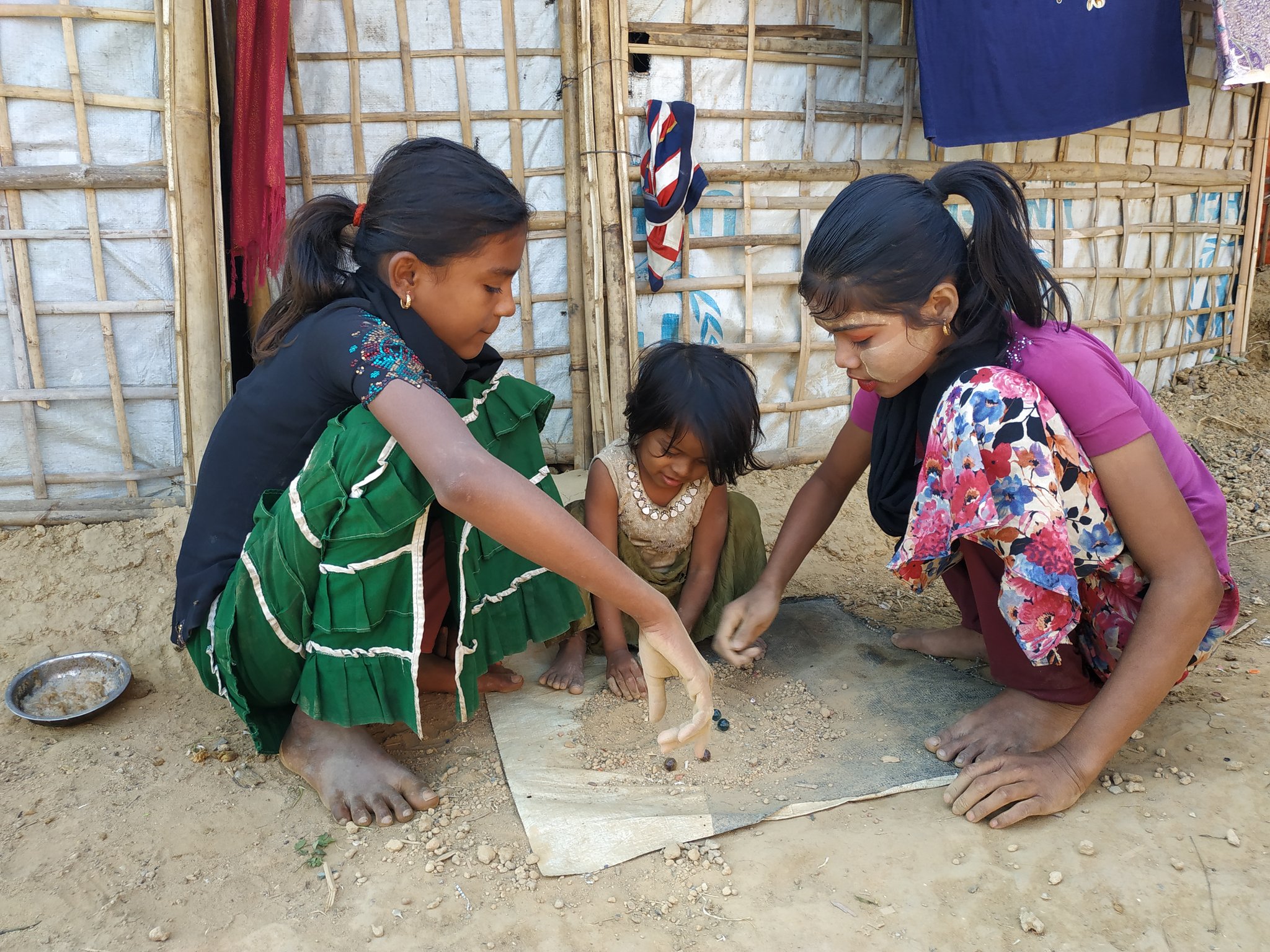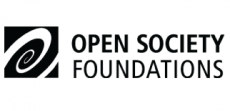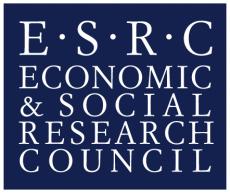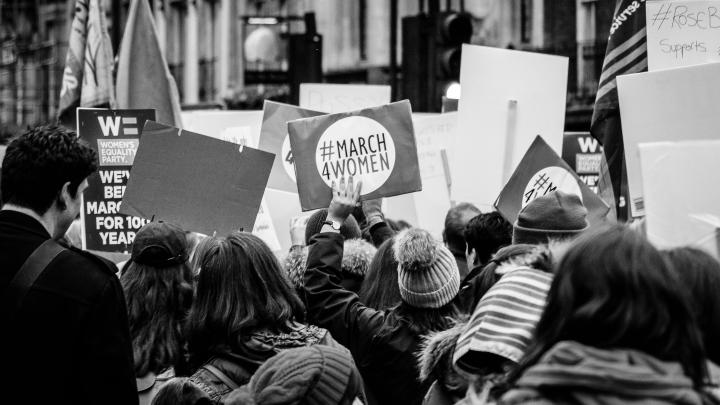Sexual and Gender-based Violence in the Displacement Continuum: The Experiences of Rohingya Women and Girls
Posted
Time to read
Guest post by Tazreena Sajjad, PhD. Tazreena currently serves as Senior Professorial Lecturer in the Department of Peace, Human Rights and Cultural Relations (PHRCR) in the School of International Service (SIS) at American University. Her areas of specialization include transitional justice, refugees, ‘'post-conflict' transitions, and gender in conflict and peacebuilding. This post is part of a thematic series in occasion of the 16 Days of Activism Against Gendered Violence.
Women and girls’ experiences with sexual and gender based violence (SGBV) in conflict, encampment, and in transit journeys may take various forms - sexual harassment, torture, death, rape, trafficking, sexual slavery, forced early marriage, forced pregnancies, family separation, detention, and/or intimate partner violence (IPV). Yet, in displacement and in border encounters, SGBV largely remain as “silent and hidden” crimes. In line with the 16 days of activism against GBV, this post draws attention to the specific forms of violence Rohingya women and girls experience in Myanmar, in Bangladesh’s camps, and on their maritime journeys to seek sanctuary.
Gendered Persecution in Myanmar
Despite being a signatory to the CEDAW, the Beijing Platform for Action, the International Conference on Population and Development, and the Millennium Declaration, Myanmar continues to have a poor track record in upholding women and girls’ rights. A complex interplay of factors – over seven decades of internal armed conflict, military rule, state institutionalized efforts to shore up majoritarian Burman power, together with patriarchal sociocultural systems – have played critical roles in generating conditions for the ongoing vulnerabilities of Myanmar’s women and girls. The Myanmar military’s systematic use of SGBV from the time of the British colonial occupation also remains a prevalent strategy for asserting state power. Since 2012, the annual UN Secretary-General reports have cited Myanmar for conflict-related sexual violence. Such violence has disproportionately impacted minoritized women and girls in particular, whose subordinate gender status within and across groups targets their bodies as markers of ethnic, religious and/or political affiliation. Davies and True’s mapping of SGBV found that from 1998 to 2015, 85 percent of victims identified the SGBV perpetrators as someone in uniform.
Denied citizenship since 1982, and regarded as “illegal Bengali migrants,” the Rohingya – a predominantly but not exclusively Muslim minority community in the northern Rakhine state – have been particularly vulnerable to Myanmar’s ethnonationalist agenda, targeted for state-sponsored forced labor, illegal detention, confiscation of land, evictions, arbitrary arrests, and summary executions. Such direct violence has been accompanied by restrictions on education and healthcare access, property ownership, travel, the number of children per family, and denying requests for marriage.
The Rohingya have also been subject to forcible displacement since 1942; mass expulsions in 1962, 1970, 1991; and most recently in 2017 and beyond.

Gendered Violence in Bangladesh Camps
Gendered violence for the Rohingya does not end in Myanmar, but continues to shape their lived experiences even as they cross the country’s border to seek sanctuary. In August 2017, the Myanmar Armed Forces launched a brutal military “clearance operation” in which, sometimes jointly with local militias, they used rape, gang rape, forced public nudity and other sexual attacks to drive the Rohingya from their homes. Within a period of about three weeks, 745,000 Rohingya were forced to flee to neighboring Bangladesh. Although exact data remains elusive, Hutchinson estimates at least 58,700 Rohingya women and girls who arrived had experienced sexual violence; with 40,000 of them being pregnant. A large proportion of these unwanted pregnancies were attributed to rape. Survivors of rape and sexual violence struggled with complications from physical injuries, PTSD, HIV infection, increased rates of sexually transmitted diseases, and depression; many were also witnesses to these egregious violations.
Today, an estimated 1 million Rohingya are hosted in Bangladesh in the Kutapalong-Balukhali mega camp-site – arguably the largest refugee camp in the world. While the “emergency period” of the crisis has ended, Bangladesh struggles with the demands of a growing refugee population in the face of waning international financial support.
The subsequent deteriorating situation in the camps is disproportionately impacting women and children who comprise 75% of the total number of residents. As a result of the WFP slashing its budget, in 2023 90% of the camp population was struggling with food insecurity, and it was documented that children under the age of five, adolescent girls, and pregnant women and girls were bearing the brunt of reduced rations. Rising incidences of crime, gender-based violence, polygamy, and trafficking have especially made widows and girls vulnerable. In a 2021 study, Mofizul Islam and colleagues found that Rohingya girls are disproportionately vulnerable to child marriages and teenage pregnancies.
While Bangladesh’s government’s restrictions have contributed to Rohingya precarity, the presence of militant groups in the camps and increasingly conservative social regulations have also placed enormous social pressures on women to quit their jobs and has restricted their mobility in public spaces.
A Dangerous Maritime Journey
In this climate of desperation, a market for human traffickers and smugglers have emerged in the camps for those seeking a future elsewhere, family reunification, or arranged marriages in countries like Malaysia. Together with Rohingya fleeing statelessness, ongoing persecution, and increasing gender-based violence in Myanmar following the 2021 military coup, those desperate to leave the camps embark on risky flights across land and increasingly across the Andaman Sea on routes chartered by human smugglers and traffickers. In recent years, boat journeys – and the number of women and children who take them – have seen a significant rise. According to UNHCR in 2020, 3,046 Rohingya tried to cross the Andaman Sea to seek safety; in 2024, of the 13,300 Rohingya who attempted this maritime journey, 72% were women and children.
These journeys - on rickety, overcrowded wooden boats – too often do not reach their desired destinations. Over the last decade many Rohingya have gone missing or have drowned in the Andaman Sea. UNHCR estimates that in 2023 alone, one Rohingya was reported to have died or gone missing for every eight people attempting the journey, making this maritime route one of the most deadly sea crossings.
Narratives of survivors indicate a harrowing pattern of food and water shortages, deteriorating health conditions, violence, and SGBV as the refugees are at times clandestinely moved from boat to boat by smugglers and traffickers or set adrift in the waters. There is growing evidence of women and girls facing gender-based violence on this maritime journey. During the 2015 Andaman Sea crisis, over 8,000 Rohingya and Bangladeshis were abandoned at sea. Natasha Yacoub and her colleagues found that many of the Rohingya women and girls on the boats had been subjected to sexual harassment, exploitation, rape, and other forms of sexual violence on board; some of their study participants revealed that they were provided with “pills to prevent pregnancy”. Such patterns of SGBV on these journeys remain endemic, with women and girls without guardians being targeted by their vessels’ captains and crew members.
When boats are adrift or capsize, rescue operations - to the extent they are carried out - have mostly been conducted by Indonesia and Acehnese fishermen, with survivors finding temporary shelter on islands such as North Sumatra and Aceh. In general, Indonesia, Thailand, and Malaysia have a track record of rejecting migrant boats in crisis, despite being bound by the obligation to rescue at sea anchored in maritime tradition and recognized as customary international law, and various commitments to the three international conventions that regulate maritime rescue.
In the coming months as monsoon winds drop and seas are calmer, UNHCR estimates the number of maritime journeys will hit record high, with many more Rohingya children and women fleeing the camps and Myanmar.
During the UN’s 16 Days of Activism against GBV, it is pertinent that we recognize that in the context of displacement, specific forms of violence stalk women and girls at every stage of their journey. For Rohingya women and girls - state-based persecution, violations by non-state actors, and domestic and IPV in Myanmar; deprivations and violence in Bangladesh’s camps; and SGBV on land and maritime journeys remain overwhelming impediments to their right to dignity and safety.
Any comments about this post? Get in touch with us! Send us an email, or post a comment here or on Facebook. You can also tweet us.
How to cite this blog post (Harvard style):
T. Sajjad. (2024) Sexual and Gender-based Violence in the Displacement Continuum: The Experiences of Rohingya Women and Girls. Available at:https://blogs.law.ox.ac.uk/border-criminologies-blog/blog-post/2024/12/sexual-and-gender-based-violence-displacement-continuum. Accessed on: 02/04/2025Share
YOU MAY ALSO BE INTERESTED IN
With the support of












